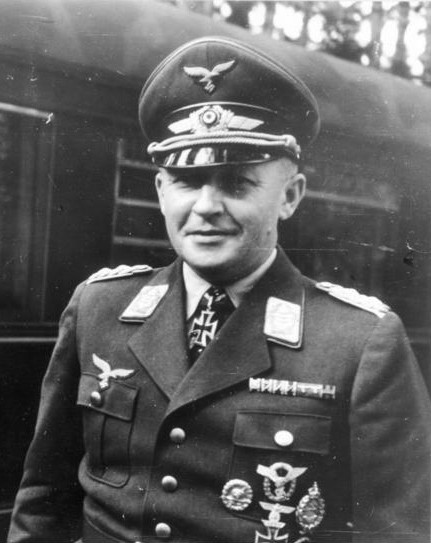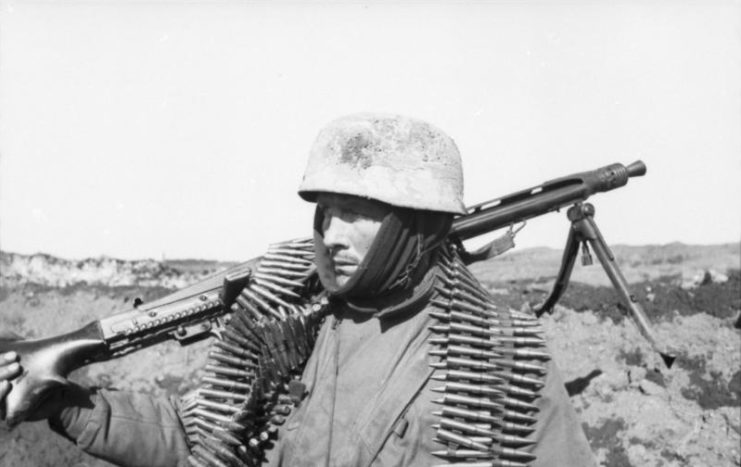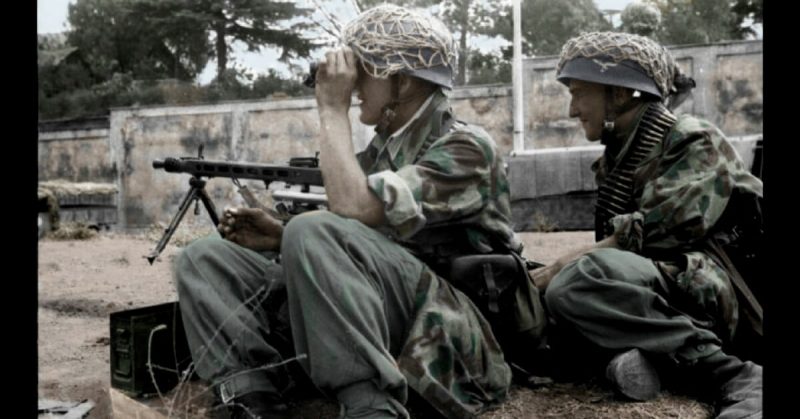An innovator of airborne assault, General Kurt Student, helped to build Germany’s paratrooper forces from nothing. He commanded them in successful operations throughout WWII.
First World War
At the outbreak of WWI, Student was a 24-year-old lieutenant in an army regiment. Sent on a pilot’s training course, he joined the most innovative area of the war.
At the start of the war, combat between airplanes was unknown. Over the following four years, a whole new form of war was created, with Germany at the cutting edge. Flyers such as Oswald Boelcke, Max Immelmann, and Manfred von Richthofen invented fighter combat. By the end of the war, Student had spent years surrounded by some of military history’s greatest aerial innovators and had proven himself as a commander.
Between the Wars
Following WWI, the Treaty of Versailles banned the Germans from developing a military air force. An air ministry was created under the pseudonym Fliegerzentrale, and Student worked there. He spent years passing on his experience as a flyer and developing ideas about aerial combat. He took part in illegal German training maneuvers in Russia, during which the tactics of blitzkrieg were developed.
Kurt Student then returned to service as a commander, spending five years in charge of a regiment in the army.
Creating New Military Forms
As the Nazi Party expanded Germany’s military might, Hermann Goering turned the Luftwaffe into an independent military machine, separate from the army. Kurt Student was transferred to the Luftwaffe and became Director of the Luftwaffe Technical Training School.
In his post, he worked long hours to create the Luftwaffe Goering wanted. He raised squadrons, established airfields, and organized work schedules. After the Training School, he moved to the Flying Equipment Test and Research Centre, where he oversaw the development of new planes.
In 1938, he was given responsibility for raising a new formation, the Luftwaffe’s Airborne Division. He was now in charge of a new sort of soldier – paratroopers.

The Low Countries
As Germany prepared to invade France through the Low Countries, Student convinced Hitler his paratroopers could play a useful role. They were given the task of destroying Belgian and Dutch defenses and seizing critical transport points ahead of the German advance.
Kurt Student planned a series of daring and successful attacks that included the defeat of the Belgian Fort at Eben Emael and the capture of strategically important bridges and airfields. Joining his men at The Hague on the fourth day of operations, he was hit by a bullet and hospitalized. It put him out of action for months and left him with a speech impediment.
Crete
Next, Student launched an attack on Crete. It was the largest aerial invasion ever undertaken, with waves of paratroopers arriving by glider and parachute.
The invasion of Crete was a mixed business. Some men landed in the wrong places. Equipment was lost when it landed in the water. Unknown to Student, General Freyberg, the New Zealander commanding Allied forces on the island, knew the attack was coming due to decrypted German signals. Allied forces put up a stiff defense.
Despite the challenges, the operation was a strategic success. However, it was so costly Hitler avoided future airborne invasions.
Russia
A proposed aerial invasion of Malta was abandoned. Instead, Student’s corps was moved to the Russian front. There, the paratroopers were used as elite infantry rather than in their airborne role. The formation was split up to plug gaps in the line. Kurt Student pressed for airborne operations, but his carefully trained specialists had been reduced to reinforcing a collapsing front.

Italy
The German high command continued to raise paratroop forces. Kurt Student was raising and training formations that would never carry out the sort of operations they were designed to do.
There were exceptions. Following the Allied invasion of Italy, Student’s paratroopers were used to destroy the command structure of the Italian army as it switched sides. He organized the operation led by Otto Skorzeny to rescue Mussolini, in which commandos landed by glider at an Alpine resort, seized the Italian dictator, and rescued him by air.
Late in 1943, an airborne army was formed. Naturally, Student was put in charge.
The Western Front
When the Allies invaded Normandy in June 1944, Student’s Army was among the troops flung in to stop them. There had not been enough time to finish raising the army, but that did not matter. They were needed.
The retreat of the 7th Army and Panzer Group West created a gap in the front. Von Rundstedt, Supreme Commander West, sent Student to fill the gap.
His force was made up mostly of convalescents and new recruits. Student’s troops moved to a sector around the Albert Canal, the same area where his men had taken Eben Emael four years before. He pulled together fragments of forces in the area and carried out a fighting retreat that eventually took them back across the Rhine.
Along the way, one of his regiments led by Friedrich von der Heydte carried out the last German paratroop drop in the west. Supporting the failed counterattack in the Ardennes, they were cut off and captured by the Allies.
End of a Career
In April 1945, Student was sent to reorganize defenses around Mecklenburg. He was captured by the British while inspecting forces in Schleswig-Holstein.
Kurt Student was tried for war crimes in Crete. He was found guilty on some but not all charges, and released from prison after three years. He retired to Lemgo and lived modestly until his death in 1978.
